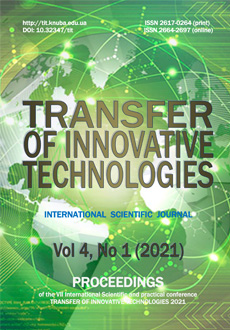Corrosion resistance of welded joints made by underwater wet welding
DOI:
https://doi.org/10.32347/tit2141.0201Keywords:
underwater welding, welded joints, sea water, corrosionAbstract
One of the reasons of coming out of order of metal structures, operating in water environment, including sea conditions, is the corrosion. Thus, for example, the corrosion wear of metal of the ship hull underwater part can reach from 0.3 up to 0.5 mm/year. The corrosion of welds is the ever more critical situation. The rate of their fracture exceeds the rate of the base metal corrosion and in some cases it may reach 1-3 mm/year [1, 2]. The great selective corrosion in the form of fissures along the welds (on both sides) was observed in heat-affected zone (HAZ) metal of slot, butt welds and welds for welding-on to the basic workpiece, i.e. up to 1 mm/year, in some cases a through corrosion fracture of the fusion line (formation of blowholes) was observed [1]. In the opinion of the work authors [2] the welds are subjected to fracture due to the occurrence of thermal electromotive force between the parts welded under conditions of high electric conductivity of the sea water (Seebeck effect).
To repair the corroded welded joints of metal structures, operated under the water, a wet underwater welding is used. At the E.O.Paton Electric Welding Institute the specialized flux-cored wires have been developed, which are designed for welding low-carbon and low-alloyed steels, including those of a higher strength. In the latter case the electrode materials of an austenite type are used to provide resistance against cold crack formation in the HAZ [3]. The work was aimed at study of corrosion resistance of welded joints with ferrite and austenite deposited metal, made by the underwater wet welding, under the conditions, which simulate the service conditions in sea water.
References
Kolomijtsev E.V. (2012) Corrosion re-sistance of welded joints of ship hull materi-als. Avtomatich. Svarka, 4, 59-64.
Sirotyuk A.M., Dmitrakh I.M. (2014) As-sessment of corrosion-mechanical defects of underwater pipeline steels. Visnyk of admi-ral Makarov NUK, 2, 66-72.
Maksimov S.Yu., Savich I.M., Zakharov S.M. (2003) Structure and properties of metal, de-posited under water by flux-cored wire with Ni sheath. Avtomatich. Svarka, 4, 19-22.
Gusachenko A.I., Savich I.M., Los E.P. (1987) Corrosion of welds of welded joints of hull steels of 09G2 type and possibility of their underwater sealing welding. Avto-matich, Svarka, 11, 58-60.
OST 5.9255–76. Metals and coatings for ship building. Methods of express corrosion tests.
GOST 9.901.2-89. Standard system of pro-tection from corrosion cracking of speci-mens in the form of bent bar.
Downloads
Published
How to Cite
Issue
Section
License

This work is licensed under a Creative Commons Attribution-NonCommercial-NoDerivatives 4.0 International License.
Our journal abides by the CREATIVE COMMONS copyright rights and permissions for open access journals.
Authors, who are published in this journal, agree to the following conditions:
1. The authors reserve the right to authorship of the work and pass the first publication right of this work to the journal under the terms of a Creative Commons Attribution License, which allows others to freely distribute the published research with the obligatory reference to the authors of the original work and the first publication of the work in this journal.
2. The authors have the right to conclude separate supplement agreements that relate to non-exclusive work distribution in the form in which it has been published by the journal (for example, to upload the work to the online storage of the journal or publish it as part of a monograph), provided that the reference to the first publication of the work in this journal is included.




